[section label=”Introduction”]
Cherry’s No Frills, Mechanical Keyboard
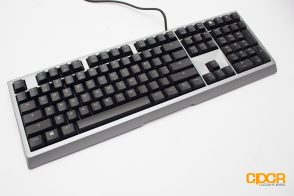 Up until the patents on Cherry’s mechanical switches expired several years ago, Cherry was practically the only major player in the mechanical switch space, but despite supplying most of the world’s mechanical switches, Cherry wasn’t really known for their keyboards. The reason for this is that while Cherry offered keyboards for business, industrial and enterprise applications, they did very little in the consumer space.
Up until the patents on Cherry’s mechanical switches expired several years ago, Cherry was practically the only major player in the mechanical switch space, but despite supplying most of the world’s mechanical switches, Cherry wasn’t really known for their keyboards. The reason for this is that while Cherry offered keyboards for business, industrial and enterprise applications, they did very little in the consumer space.
However, with the rise in popularity of the mechanical keyboard, it’s difficult to ignore how quickly the consumer market for mechanical keyboards is growing and given that Cherry already manufactures the biggest component in the mechanical keyboard, Cherry launched their own mechanical keyboard in hopes to get their own piece of the mechanical keyboard market.
As such, today we’ll be reviewing Cherry’s MX Board 6.0 mechanical keyboard with the Cherry MX Red switches. Let’s take a closer look.
Specifications
| Manufacturer | Cherry |
|---|---|
| Model | MX Board 6.0 |
| Layout | C104+4 Media keys |
| Switch Type | Cherry MX Red |
| Backlight | Red, Blue |
| Weight | 2.9lbs |
| Size | 17.87″ x5.78″ x 1.1″ |
[section label=”A Closer Look”]
A Closer Look
Here’s a look at the packaging for the Cherry MX Board 6.0. The box is pretty plain with just huge Cherry logos and MX Board 6.0.
The Cherry MX Board 6.0 comes bundled with a basic cover, a large wristrest and some documentation. The keyboard itself looks very plain, which isn’t surprising looking at the rest of Cherry’s products which are typically aimed at business and enterprise customers.
The profile of the keyboard is flatter than most standard mechanical keyboards. It also uses low-profile keycaps that are just a touch flatter than your typical mechanical keyboard. This in turn produces a sleeker, more flush look.
The first thing that stood out to me about the Cherry MX Board 6.0 is its undersaturated aluminium chassis. Maybe it stands out so much because it contrasts the black key caps. Dimension wise, the Cherry MX Board 6.0 is about the same size as a regular keyboard, but its quality metal build makes it very heavy.
We find nothing fancy in the function row aside from some volume adjustments and backlight brightness controls. The key-prints aren’t outlandish either.
Where there should be LED indicator lights are populated with the Windows Key toggle switch and playback controls. The indicator lights for the Caps lock, Num lock, and Scroll lock has been moved onto the respective keys instead.
We have the familiar Cherry MX Red switches with switch-mounted LEDs. Most keys on the keyboard can only glow in red with the lock keys being the exceptions – they change to blue to indicate that they’re activated.
Being a Cherry keyboard, the MX Board 6.0 utilizes Cherry stabilizers for the longer keys.
The keycap quality on the Cherry MX Board 6.0 is a bit disappointing. They feel very flimsy and light. They also sit very loosely on the stem, requiring little force to remove.
The back of the keyboard is constructed out of plastic and secured with a whopping 20 screws.
The elevator feet flips out towards the side.
A pair of magnets at the bottom help to keep the wrist rest firmly attached to the base. Tiny rubber feets are scattered around the edge of the chassis to prevent slippage.
The plug on the connector side is very interesting. It certainly gives the illusion that it can be detached from the base, but it’s not actually possible. You can’t pull it out from the rear due to the tapered tail, and you can’t lift it from the top because that would break the plug.
Included in the package is a large, grippy wrist rest. The wrist rest is reinforced with a rigid aluminum frame and the rubberized coating is dimpled with “Cherry”. I’m not a personal fan of rubberized coating because they tend to collect dust and other particles.
[section label=”Performance”]
Performance
 The Cherry MX Board 6.0 features only the linear Cherry MX Red switch. With a linear travel and a feathery actuation force of just 45g, the Cherry MX Red is easy to actuate and doesn’t feature a tactile bump in the middle of its travel like the Cherry MX Blue or Cherry MX Brown switch. With that said, the lack of a tactile bump also means that there’s no hysteresis, which provides a more precise actuation and reset point.
The Cherry MX Board 6.0 features only the linear Cherry MX Red switch. With a linear travel and a feathery actuation force of just 45g, the Cherry MX Red is easy to actuate and doesn’t feature a tactile bump in the middle of its travel like the Cherry MX Blue or Cherry MX Brown switch. With that said, the lack of a tactile bump also means that there’s no hysteresis, which provides a more precise actuation and reset point.
As such, the Cherry MX Red’s low actuation force combined with its consistent response rate is a blessing in gaming. It had no trouble keeping up with my rapid tapping in Starcraft 2. It also doesn’t tire out your finger as quickly as some of the switches with a heavier actuation force. The Cherry MX board also isn’t loud like other boards with tactile bumps which is a bonus if you game late at night and don’t want to wake up the entire house.
Typing on the Cherry MX Board 6.0 wasn’t bad, but I still much prefer the Cherry MX Blue or Brown switches. I don’t tend to bottom out the keys when I type, so I like a tactile feedback when I reach the actuation instead of relying on a letter to pop up on my screen to indicate when I should move on to the next keystroke. However, typing on the Cherry MX Board 6.0 isn’t an awful experience. Key travel is buttery smooth and the keys are dead silent compared to its MX Blue and MX Brown cousins.
Being a keyboard made by Cherry Corp, it shouldn’t come as a surprise that the Cherry MX Board 6.0 uses Cherry Stabilizers however, the unfortunate tradeoff is that they tend to make the longer keys feel different in terms of the actuation force required to actuate a key than their Costar competitors. With that said, the stabilizers on the Cherry MX Board 6.0 is still good, likely to due the resistance offered by the switches themselves. While they’re indeed a little mushy when bottomed out and the depression force isn’t completely consistent, they’re fairly decent and isn’t the worse I’ve seen.
The Cherry MX Board 6.0 also incorporates analog signal sensing via a technology called Cherry RealKey. The controller reads the current differences when the key is pressed, therefore reducing the time for registration down to just 1mm. In testing, this made no noticeable difference. The keys were responsive, but I wasn’t able to feel a difference between a keyboard with and without Cherry RealKey. Good thing is that Cherry RealKey also supports full NKRO-important if you roll 10 keys at a time.
NKRO/Anti-Ghosting Testing
To test the NKRO/anti-ghosting functionality of the Razer Ornata Chroma, I’ll be using a web app developed by Microsoft’s Applied Science Group. More information about the web app and the relationship between ghosting and NKRO can be found here.
Dropping a book onto the Cherry MX Board 6.0 produced the expected results – full NKRO.
[section label=”Conclusion”]
Conclusion
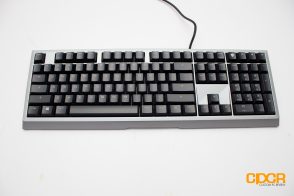 In most regards, the Cherry MX Board 6.0 completes exactly what it sets out to be – a durable, professional keyboard, but it does fall short of the competition which is something I’d like to see Cherry iron out for the next iteration.
In most regards, the Cherry MX Board 6.0 completes exactly what it sets out to be – a durable, professional keyboard, but it does fall short of the competition which is something I’d like to see Cherry iron out for the next iteration.
As someone with a multitude of accessories on his desk, I appreciate the matte, neutral tone of the grey aluminum chassis. Having a keyboard that isn’t shaped after fighter jets helps it easily camouflage into its environment. With that said, I’m not a fan of the non-programmable mainly red-colored LEDs. While it’s nice and bright-a killer feature in 2013-programmable RGB lighting is practically required for a premium mechanical keyboard these days.
In terms of overall build quality, having the front plate crafted completely from aluminum eliminates any creaking and flexing you’d typically find on keyboards with plastic chassis, which is typically a problem for lower end keyboards. The chassis also adds a bit of weight to the board, which helps it stay in place. While it’s not flashy compared to other keyboards on the market, it’s very high quality which is a huge plus.
Keycaps on the Cherry MX Board 6.0 is a bit interesting as well. They’re a tad lower than OEM keycaps which make no difference in performance however, it makes the keys look more “flush” with the chassis. While I’m not sure if it’s because less material is used on the keycaps or if the keycaps are simply manufactured with very wide tolerances, they do sit very loosely on the stem making them prone to sometimes popping off under rapid tapping. This is extremely frustrating when you’re scrambling to spam hotkeys in gaming. They also look flimsy and cheap which isn’t good considering keycaps cover the majority of the keyboard.
It’s a little difficult to rate the Cherry MX Board 6.0’s performance. Cherry touts that it targets the professional users, yet it uses the linear Cherry MX Red switches rather than Cherry MX Blue or Cherry MX Brown which are typically favored by typists and gamers alike. Considering this is the only switch flavor that’s being offered with the MX Board 6.0, I feel like the keyboard tilts more towards gamers instead of typists. Typing experience is in no way awful, but touch typists will undoubtedly miss the tactile bump in the middle of travel.
Extra features on the Cherry MX Board 6.0 includes a few dedicated media keys, a windows key/Fn key toggle button, and a large, rubberized wrist rest. The dedicated media keys work great and the Windows/Fn toggle key is wonderful for gaming. Since the rubberized wrist rest can be detached, you can run it under the sink when it’s dirty. It’s a damn good thing too, because you’re going have to do that a lot with all the dirt and dust that it collects.
To sum it up the Cherry MX Board 6.0 is a durable, simple keyboard that falls short against competitors on lighting options, keycap quality, programmability, and switch selection. Personally, I can’t find I can’t ways to justify its premium $173 price tag. Even if you don’t need any of the features mentioned above and want the large wrist rest, I would still push you towards other selections such as the Das Keyboard Professional 4, Ducky Shine, and many other keyboards that offer similar-if not more-value at a lower price point.
Sample provided by: Cherry
Available at: Amazon

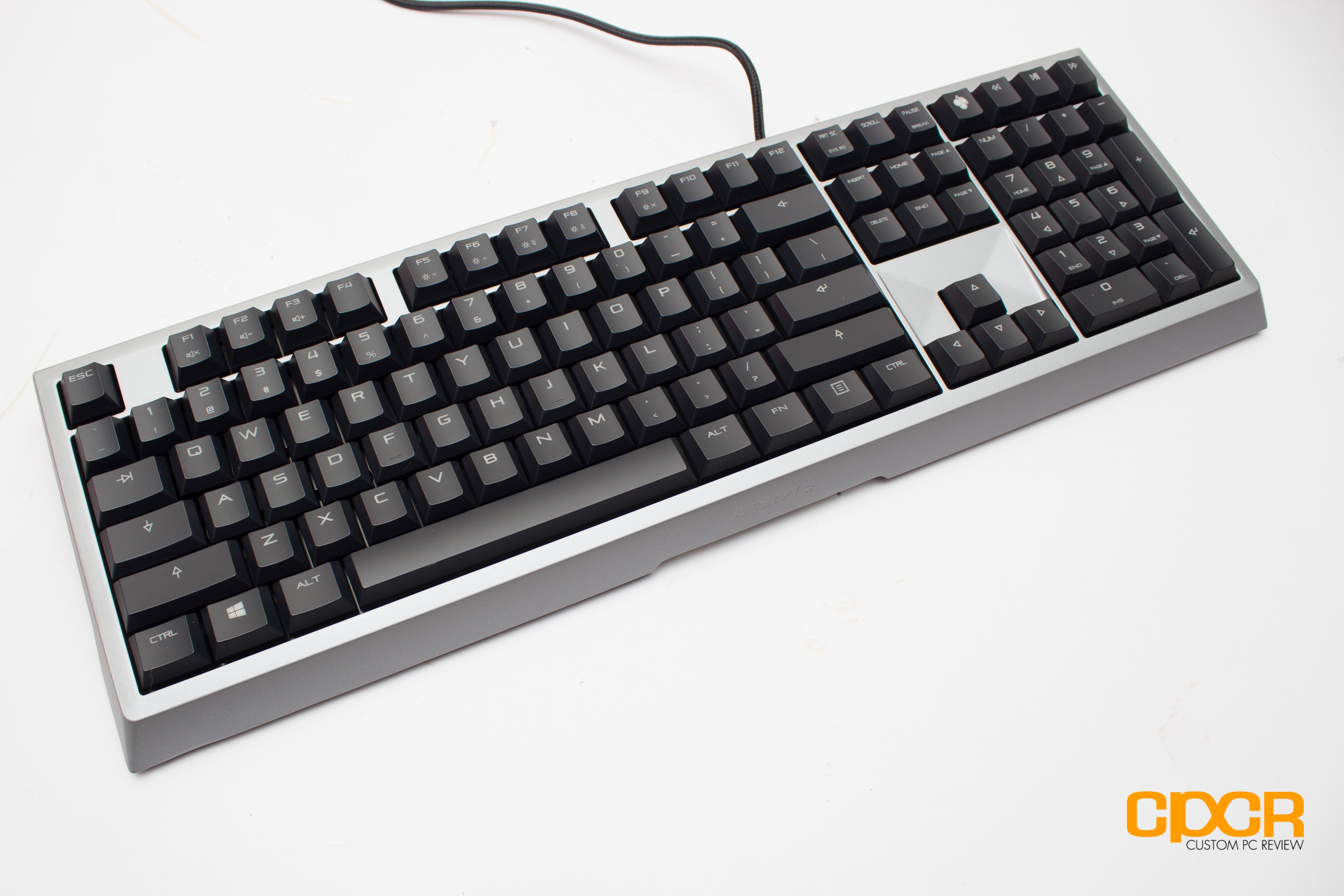
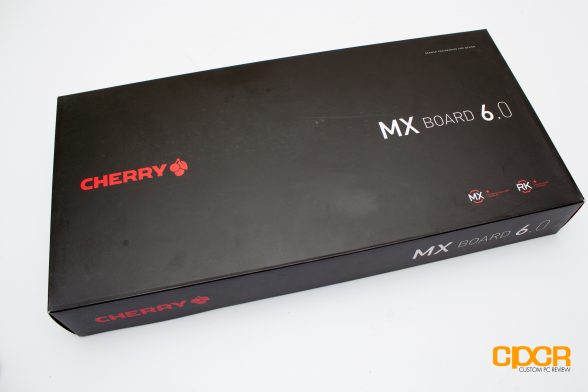
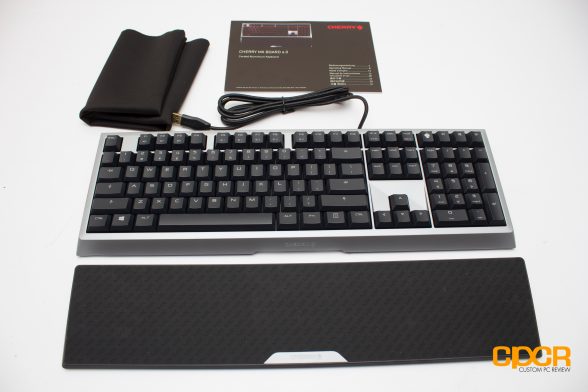
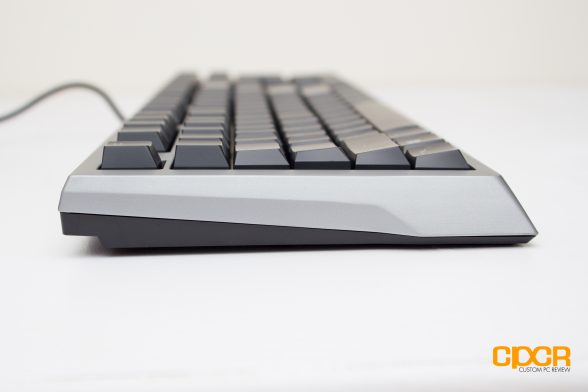
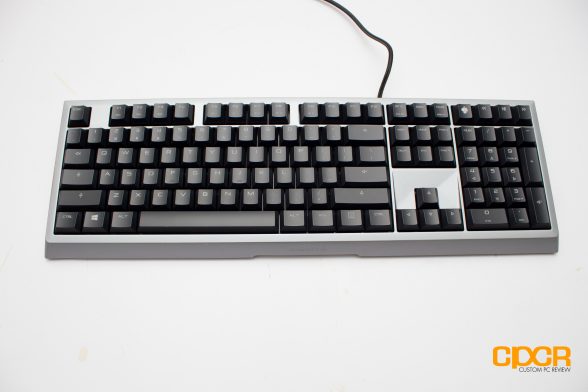
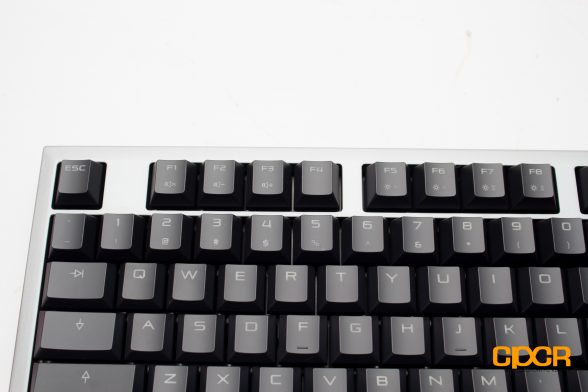
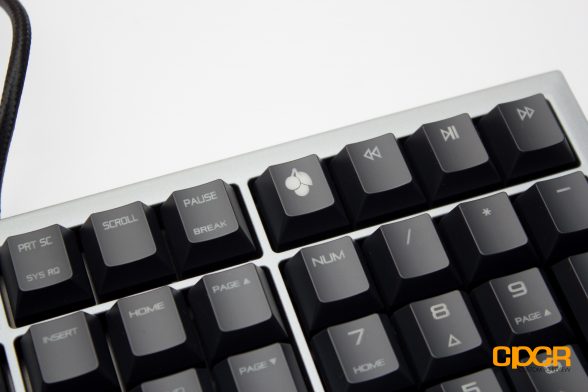
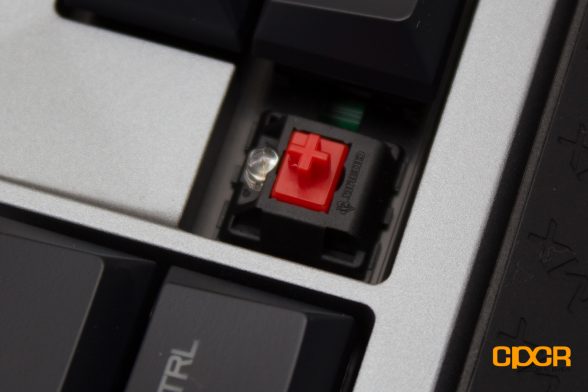
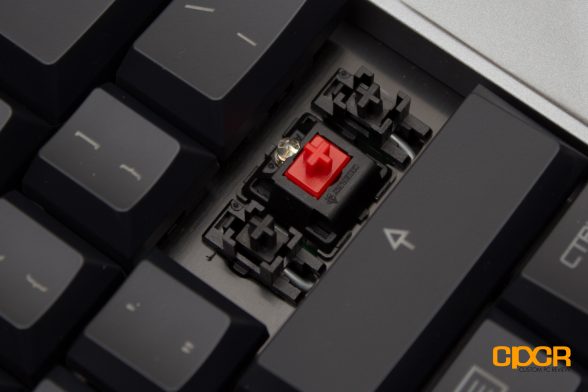
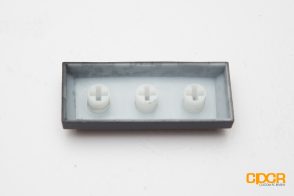
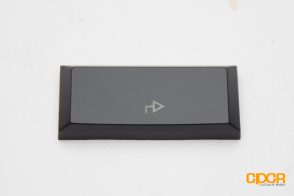
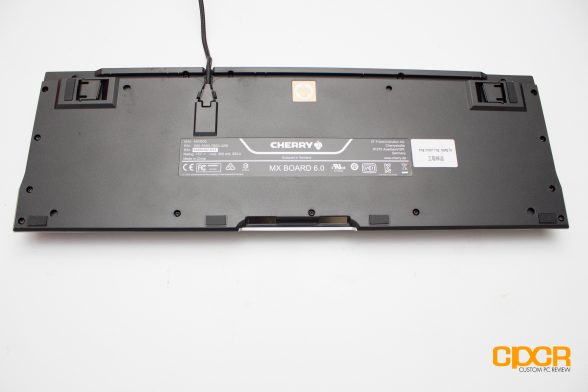
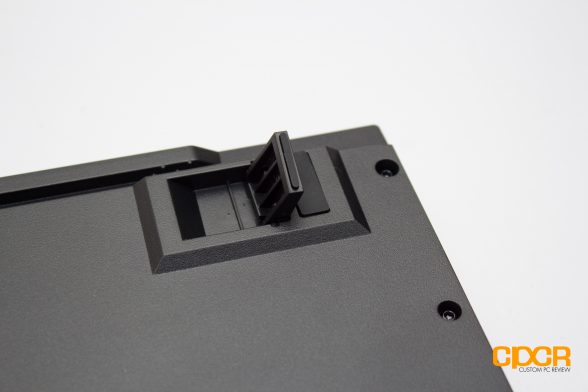
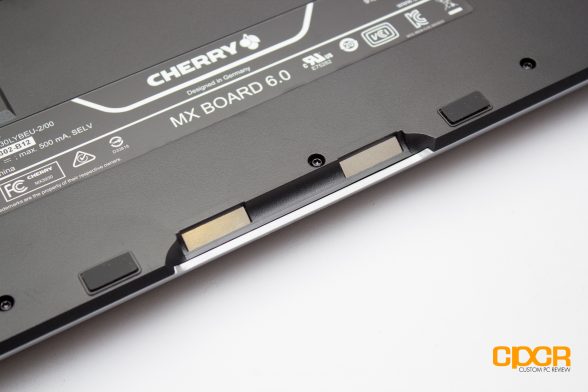
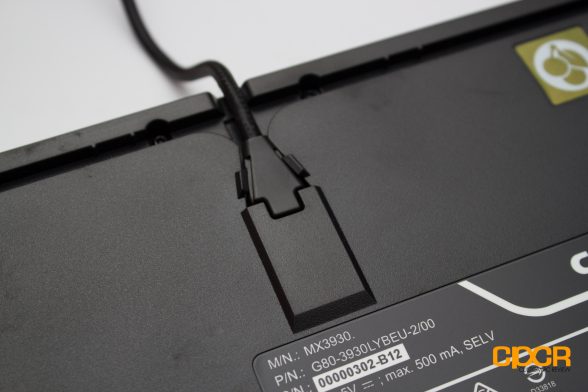
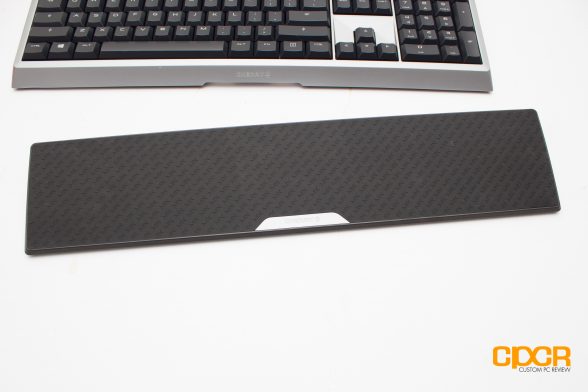
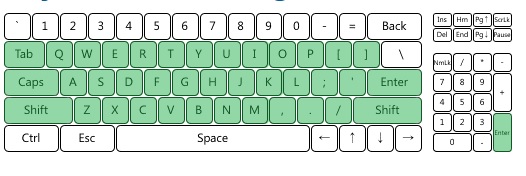
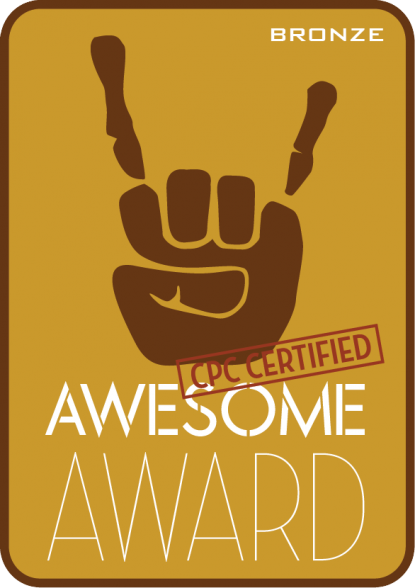
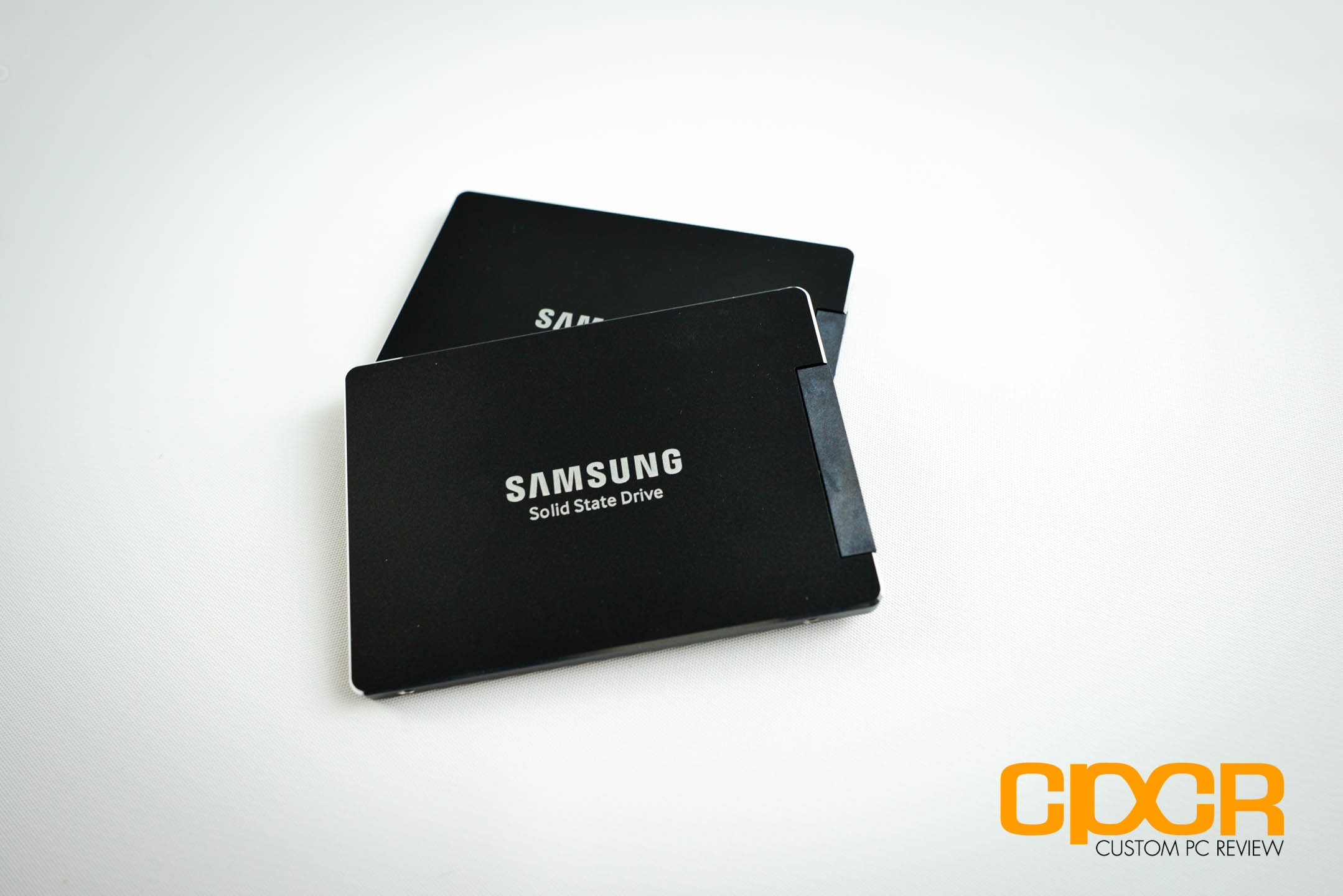
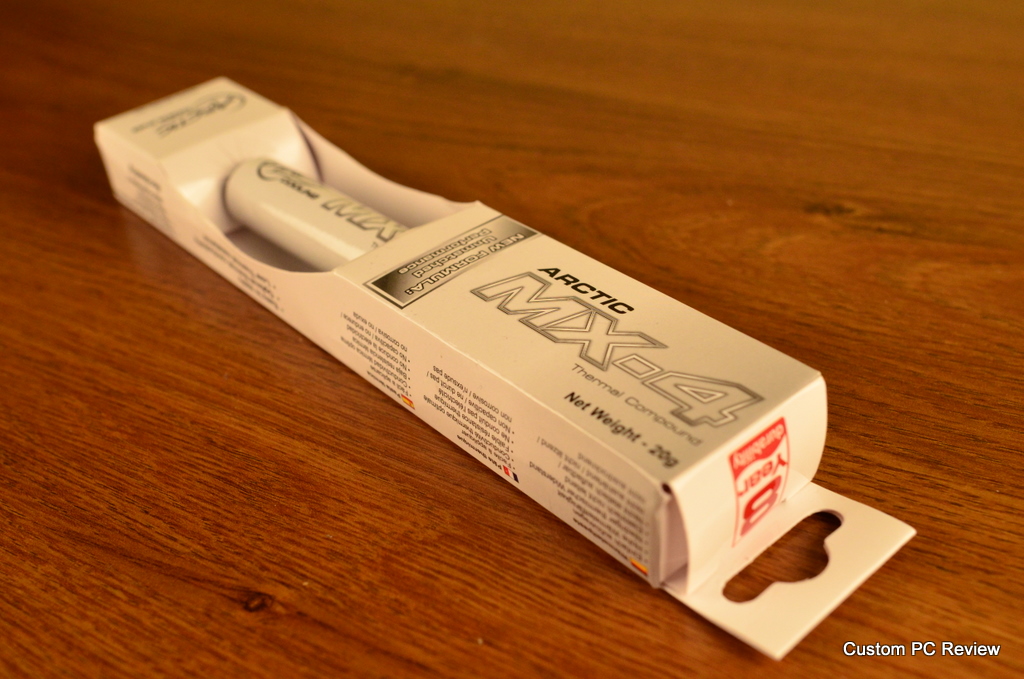
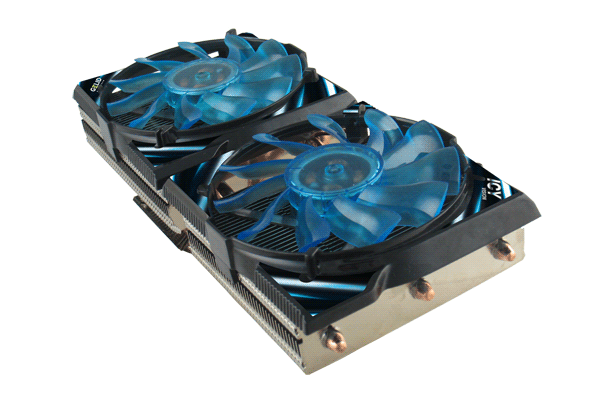
![ROCCAT Kone [+] Gaming Mouse Review](https://www.custompcreview.com/wp-content/uploads/2012/09/roccat-kone-+-custom-pc-review-121.jpg)
Great review! I have this keyboard and love it, but I need to replace a scratched keycap. I have a wire keycap puller coming in the mail – how do I remove the cap without damaging anything? I haven’t don it before – is there a specific technique?
Hey Liam,
You should be able to just pull the keycap with your hands. The caps and the stems are pretty durable and as long as you ensure that you lift the keycap directly upwards, you shouldn’t have any issues in terms of damaging the keycaps.